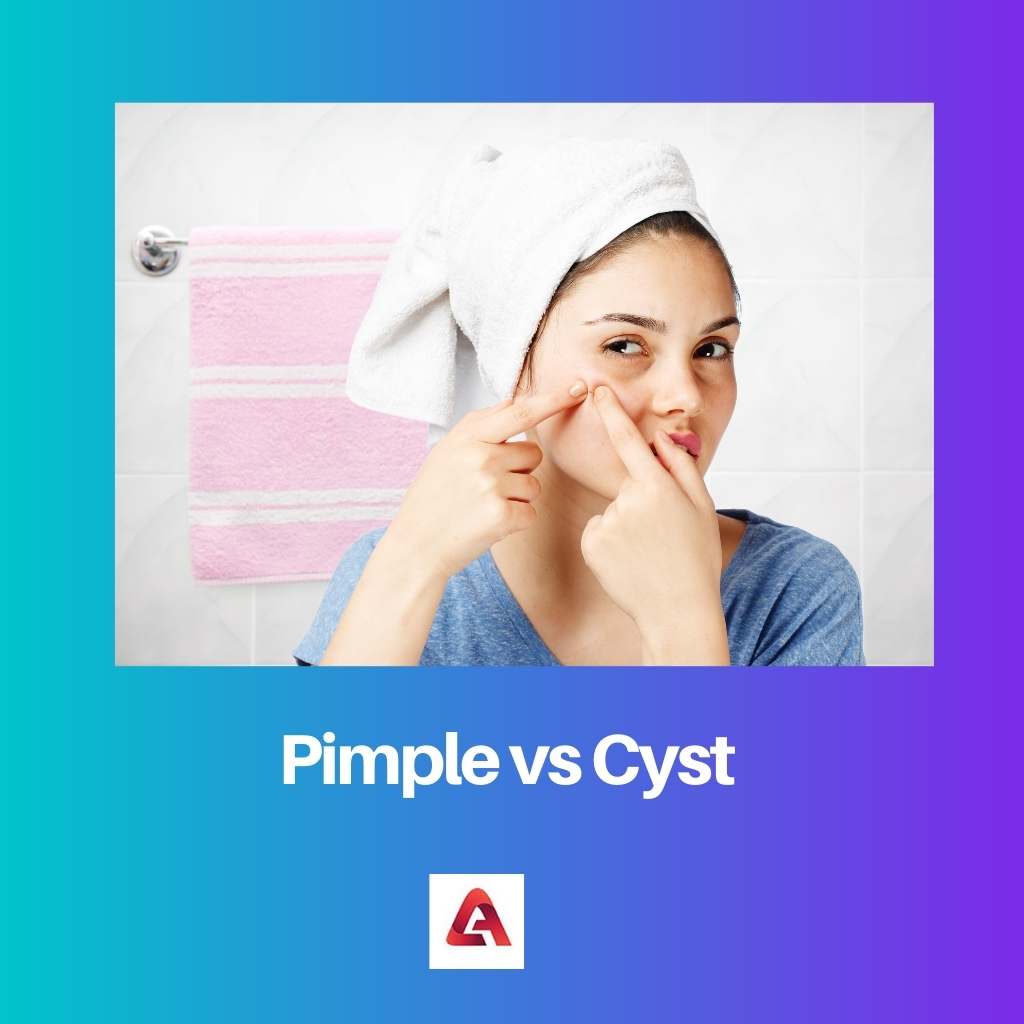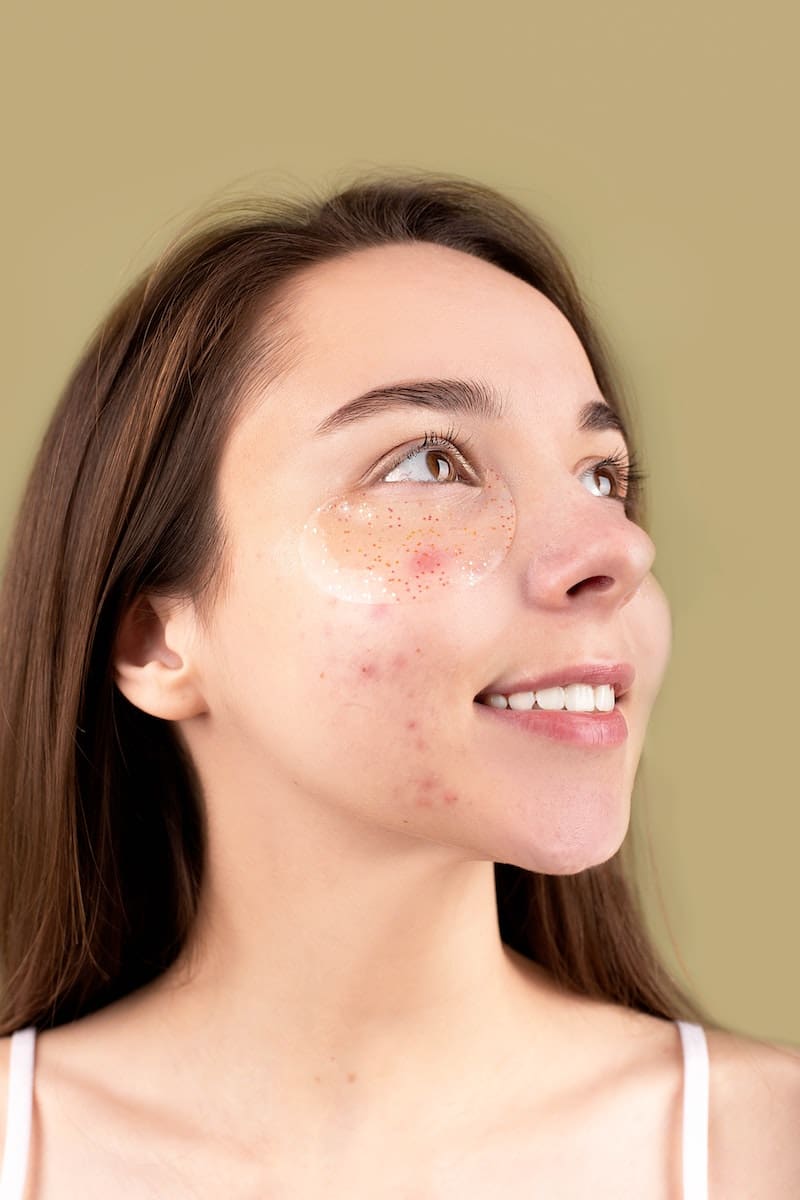Acne is a skin condition that affects young adults as well as teenagers. If someone is suffering from acne, then it is important to recognize from which type of acne the person is suffering.
Specific symptoms target particular acne, and its actual treatment can be done by recognising it.
If someone has acne, it may have skin blemishes like pimples, nodules, whiteheads, papules, blackheads, or cysts.
Skin blemishes commonly appear on the shoulder, face, chest, neck, and upper back. In this article, differences between pimples and cysts are highlighted.
Key Takeaways
- Pimples are small, inflamed skin blemishes resulting from clogged pores, while cysts are larger, fluid-filled sacs that can form beneath the skin.
- Pimples resolve independently within a few days, while cysts may require medical intervention or take weeks to months to heal.
- Proper skincare and hygiene can help prevent pimples, whereas cysts can have various causes, including infections or genetic factors.
Pimple vs Cyst
The difference between a pimple and a cyst is that a pimple is a small papule or pustule. On the other hand, the cyst is a sac or closed capsule-like structure which is filled with semisolid, air, or fluid material.

The build-up of bacteria and the overproduction of oil can lead to pimples. The face, shoulder, back, neck and chest are the areas of the skin with functional oil glands of the largest number.
It can have causes that do not come from underlying diseases. They are self-diagnosable and self-treatable.
The cyst can vary in size and can occur anywhere in the body. The cyst wall is the capsular or outer portion of the cysts.
They develop when the sebaceous gland clogs due to acne or forms around something when stuck in the skin. They are not cancer, but changes in appearance and cause pain.
Comparison Table
| Parameters of Comparison | Pimple | Cyst |
|---|---|---|
| Interpretation | It is a small papule or pustule. | It is a sac or closed capsule-like structure that is filled with gaseous, semisolid, or liquid material. |
| Frequently found | On the chest, face, back, and shoulders. | In the skin. |
| Risk factors | Age, family history, and hormonal changes. | Infections and tumors. |
| Types | Blackheads, papules, whiteheads, nodules, and pustules. | Breast, colloid, dermoid, ovarian, kidney, pilar, and many more. |
| Diagnosis | By examining the skin. | By ultrasound, CTs scans, MRI scans, needle biopsies, and palpation. |
What is Pimple?
A pimple is a type of comedo resulting from dead skin cells and excess sebum trapped in the skin pores. It may evolve into papules or pustules in its aggravated state.
Antibiotics can treat it, and anti-inflammatories and acne medication prescribed by a physician or at a pharmacy purchase several over-the-counter remedies.
Inside the skin pore is a gland, namely, the sebaceous gland, which produces sebum.
When the skin’s outer layer sheds, oily sebum and dead skin are left behind and might bond together to form a blockage at the skin base of the sebaceous gland.
At puberty, skin starts becoming thick, and that’s why it is most common. The production of sebum continues from the sebaceous gland and builds behind the blockage.
In the area, bacteria grow and cause infection as well as inflammation.
Other causes include stress, family history, medication side effects, and hormone level fluctuations. According to the American Academy of Dermatology, oil-free, non-comedogenic, won’t clog pores, and non-acnegenic labelling acne product users are least likely to suffer skin acne or irritation.

What is Cyst?
A closed sac is a cyst with a distinct division and envelope compared to the nearby tissue. So, it is a cell’s cluster grouped and forms a sac.
It might contain semisolid, air, or fluid material. Cysts are that cell that forms the shell of a sac that is distinctly abnormal.
An abscess is known as a collection of pus, not a cyst. The cyst may resolve itself once it forms. If a cyst fails to resolve, it may require surgery, but that would depend upon its location and type.
Microcyst are small cysts and can be seen through magnification.
Cancer-related cysts are formed as a mechanism of defence for the body following the development of the mutation that leads to an uncontrolled cellular division.
If that mutation occurs once, the affected cells incessantly divide and become cancerous.
Cystic tumours are cysts with neoplastic. Several types of cysts are not neoplastic and are considered metaplastic or dysplastic.
The pseudocyst is similar to cysts with a fluid sac filling but lacks an epithelial lining. Treatment ranges from cyst’s simple enucleation to resection to curettage.

Main Differences Between Pimple and Cyst
- Pimples develop when oil glands, or sebaceous glands, become infected and clogged, leading to red lesions and swelling filled with pus. But the body’s natural drainage system gets blocked and can develop a cyst.
- Moisturizers and warm compresses are two of the self-care pimple treatment options. When it comes to the cyst, applying a warm compress daily until it drains is the best option for self-treatment.
- Symptoms of pimples range from uninflamed blackheads to red, tender, and large bumps or pus-filled pimples. The symptoms included in a cyst are an abnormal lump beneath the skin and headache if a cyst is in the brain.
- The main cause behind pimples is dead skin and sebum, which clogs the pores. On the other hand, parasites, genetic conditions, and defects in the cells are a few of the symptoms of cysts.
- If symptoms of pimples get worse and get painful as well as large enough, then it’s time to see a doctor. On the flip side, painful cysts, redness, fever, and warmth cause in case of cyst then make an appointment with the doctor.



